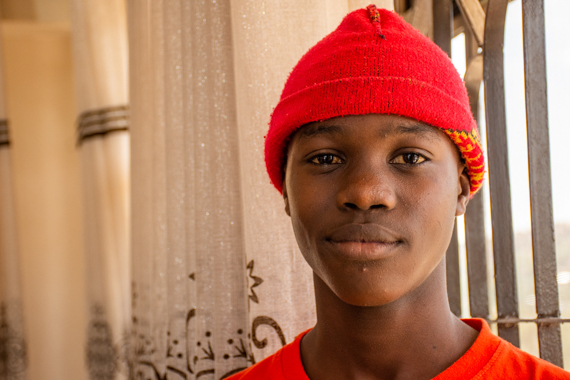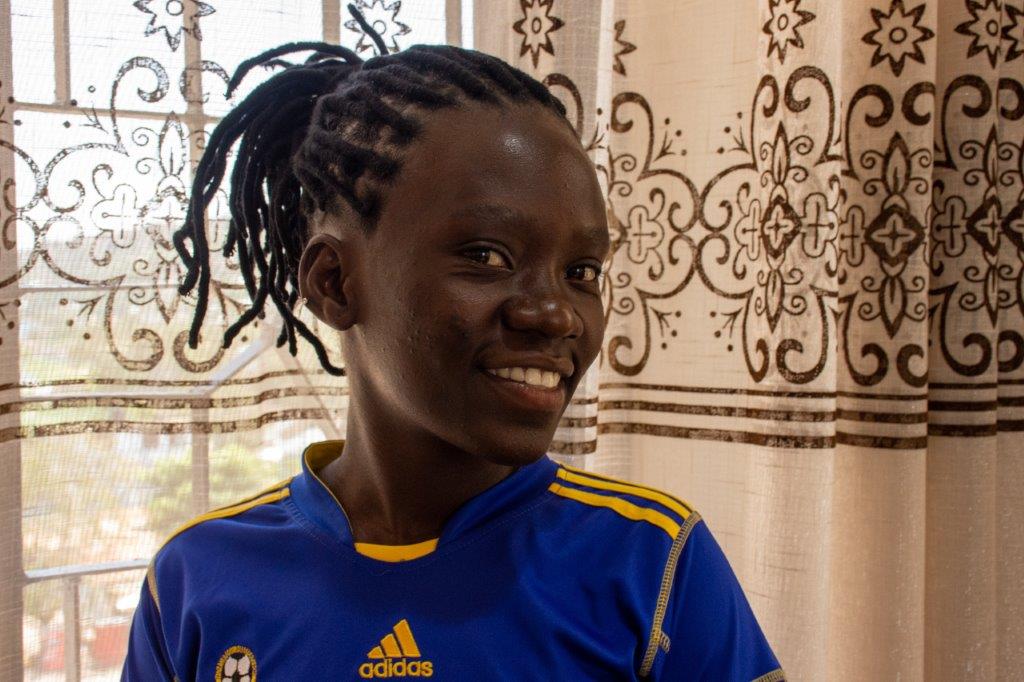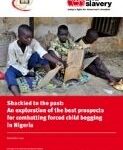Ending child slavery
Caption: A member of the Advocacy Committee of child domestic workers in Mwanza, Tanzania.
What’s the issue?
An estimated 12 million children are living in slavery – a quarter of all people who endure modern slavery. Child slavery and the worst forms of child labour include trafficking, debt bondage, forced labour, forced marriage, and sexual exploitation.
The problem of child slavery is persistent, with 3.3 million children in forced labour and 8.9 million children in forced marriages. Unfortunately, world events such as climate change and the Covid-19 pandemic are increasing the risk of child slavery. This is a serious injustice against children who need love, support and opportunities to live and thrive. Urgent action is needed.
Some key definitions:
Child slavery
Child slavery is when a child is handed over to be exploited for someone else’s gain. Child slavery can take many forms, including forced labour.
Child labour
Child labour is not slavery, but nevertheless hinders children’s education and development. Child labour tends to be undertaken when children are in the care of their parents.
Child trafficking
Trafficking involves transporting, recruiting or harbouring people for the purpose of exploitation, using violence, threats or coercion. Child trafficking may – but does not have to – involve violence, deception or coercion. Child trafficking is broadly: the act of transporting or harbouring children for exploitation.
Worst forms of child labour
As well as slavery and forced labour, The worst forms of child labour include hazardous work, which seriously damages children’s health and development through, for example, exposure to dangerous machinery or toxic substances, and may even endanger their lives.
Child work
Some types of work make useful, positive contributions to a child’s development, helping them learn useful skills. Often, work is also a vital source of income for their families.
Read about some of the ways children are exploited today
Labour and migration are seriously affected by climate change and environmental degradation. As this gets worse children are becoming more vulnerable to modern slavery.
Child slavery deprives young people of their childhood, and denies them dignity, education and physical and emotional development.
Here at Anti-Slavery International, we’re determined to make sure that all children can enjoy their freedom.
Three examples of child slavery:
- Child domestic work. The International Labour Organization estimates 17.2 million children are engaged in domestic work, mostly girls. While child domestic work can be empowering for children – enabling them to support themselves and send money to their families while gaining an education – some child domestic workers operate in slavery-like conditions. Children in domestic work need clear and fair contracts, support within the local community, and legal protection
- Forced child begging. Around the world, the practice of children being forced to beg to profit others, sees children collecting money on the streets, often facing violence if they fail to meet begging quotas, abuse and missing out on their right to an education. Children may also be trafficked into forced begging. We investigated this practice in Northern Nigeria and elsewhere, and found many examples of young boys’ being subjected to religiously motivated forms of child begging
- Children born into slavery (descent-based slavery). Across the Sahel belt of Africa many children are born into slavery in a system that has persisted for centuries. This can occur as their ancestors were captured into slavery, and this ‘ownership’ has been passed down the generations. Children born into this form of slavery often face severe forms of exploitation throughout their life, working without pay and often missing out on education, they are gifted like commodities
Child slavery is incredibly complex and closely linked to our other strategic priorities – climate change, trafficking and migration, and slavery in supply chains.
What do we want to see?
We strive for a world where no child experiences slavery, but there is a long way to go.
We are pushing for laws to be introduced and enforced that protect children from slavery. We need children who have been involved in slavery, or who are at risk of it, to be listened to, and be able to inform and influence the solutions.
Through our work with the media and partners around the world, we aim to make child slavery a matter of urgent global action.
What are we doing about it?
Child slavery happens when children are not properly protected by laws, by their communities, and by the people around them who have a duty to protect them. The reasons for this are many and varied, including poverty, weak rule of law, and discrimination.
For a world free from child slavery, we know that we need cooperation of governments, communities, businesses and other stakeholders on a global scale. With this in mind, we are focusing on four ways of tackling child slavery:
- Legal protection. Children have been let down by national and international law. We will work hard with policy-makers and other partners to promote legal frameworks that properly prevent, prohibits and protect children from slavery
- Changing norms. We address the social, cultural and religious norms that allow child slavery to prosper. We work closely with communities and survivors to make sure our work is culturally appropriate and sustainable
- Leave no-one behind. We focus on gender, disability, caste and forms of discrimination that leave children especially vulnerable to exploitation
- Voice and participation. We’re working to make sure that children’s voices are not only heard, but that they are afforded an opportunity to share their insights and help shape policy

Our track record
At Anti-Slavery International, we have a strong track record of fighting child slavery. We have many notable successes in our work in making sure children can enjoy their childhoods in freedom.
In recent years we:
- Led a successful campaign that led to the end of the practice of trafficking children (as young as five) from South Asia and Africa into the camel racing industry in the Gulf
- Successfully campaigned for an international agreement on domestic work to include specific protections for child domestic workers, meaning child domestic workers around the world could gain access to greater protections in the workplace.
- Mounted internationally important studies and projects looking at issues like child sexual exploitation in Nepal, forced child begging in Senegal and Nigeria, and bonded child labour in India. Crucially, our advocacy around identifying when child marriage is child slavery combined with our advocacy led ultimately to the inclusion of forced marriage into global slavery statistics
- Supported children subjected to trafficking into forced criminality in EU states – including (at the time) the UK, heightening their level of support and raising awareness of the scale of trafficked children
Support our work. You can get involved in our work to protect children from exploitation. Join us today.
Our research:

